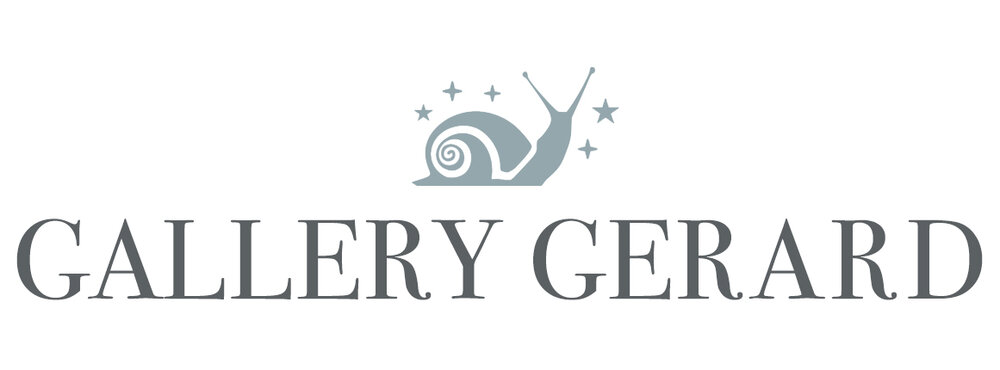By Justin Gerard
Back in May of 2011 I wrote an article on Muddy Colors detailing my on-going search for an oil painting medium that would provide me with the following characteristics:
1. Workability - That the paint itself allows for the smooth, buttery application consistent with that of traditional oil paints.
2. Archival-Longevity - That the final product will not suffer from any unreasonable, long-term degradation. (cracking, colors fading or darkening, wrinkling)
3. Fast-Drying - That if needed, a thin layer could be touch-dry, ready-to-paint-over, within 24 hours, but the medium itself stays workable for at least 8 hours.
4. Non-Toxic - That you can work solvent-free and in a non-toxic studio environment.
It was easy to find a medium that would offer three but seemed impossible to find a suitable one that would offer all four. Now finally, four years later I believe that I may have found a solution:
Enter: Gamblin’s Solvent-Free Fluid
The folks at Gamblin recently created this medium by adding an soy-based alkyd drying agent to Safflower oil. Safflower oil is wonderfully fluid and a pleasure to work with, but has the drawback of taking forever to dry. So for painters who are interested in painting indirectly using several layers, it can be problematic.
How is Gamblin's Solvent-Free-Method more similar to solvents than other mediums?Previously I had been using mediums based on either sun-thickened linseed oil or M. Graham’s Walnut Alkyd medium. Compared to these mediums, this medium is incredibly fluid and much more workable.
It is much easier for me to get quick coverage of an area, and then simply not add any fluid if I want to slow down and paint an area with more control.
I found that if I need to carve out an area that I had already painted, (to sharpen the edges of a glaze for instance) that it allowed me to do this far more easily than other traditional mediums.
In general, I found that it allowed for a broader range of brushwork techniques than other mediums.
How is it different from working with actual solvents?
Compared to odorless mineral spirits it is still highly fluid, though not quite as fluid as OMS. I did however, find that it was close enough for my purposes.)
The main difference that I can see is that OMS evaporates as it dries, so your layer is extremely thin and there is very little build up. With Gamblin Solvent-Free Fluid you will have slightly more build-up since the medium does not evaporate and remains in the paint. Because of this Gamblin recommends never mixing more than 25% Solvent-Free Fluid with your paints.
Is the drying time noticeably better than traditional mediums?
Yes! I found that thin layers were dry in about 24 hours. While this was generally slower than OMS mixed with galkyd, liquin or a cobalt dryer, it was still much faster than other traditional mediums. I would compare it to the drying speed of M. Graham’s Walnut Alkyd Medium but with far more workability.
Is it easy to clean?
Yes. Gamblin recommended using Safflower oil for cleaning brushes so I decided to try that and was really pleased with the results. You definitely don’t need any turps or solvents to clean with this medium. If you need to get your brushes clean for longer storage, a simple bathroom cleaning glove and a bar of soap and water will suffice to get your brushes perfectly clean.
A note on cleaning: The medium itself will stay open on your palette for several days. The tiny cap in the picture above stayed open and usable for several days, even while the thin layers on the canvas dried overnight. This amazed me since I had not sealed it in any way and planned on throwing it out the next day (which is what I would have been forced to do with other alkyd mediums).
This is good news as it means that even if you forget to clean your brushes the night before you will have no trouble getting them clean the next day.
A second note: Gamblin’s Safflower and their Solvent-Free Fluid look the same. This confusion led to studio mishaps, where Annie and I accidentally used the wrong one and couldn’t figure out why our paintings hadn’t dried in a week.
This is why the bottles now have hastily scrawled titles to keep them separate. Never again.
I’M LOOKING AT YOU GAMBLIN LABEL DEPARTMENT.
Would you recommend it?
Yes I would. It has been an absolute pleasure to work with so far and has gotten me excited about oil painting again.
My final verdict is if you do not have any trouble with turps and mineral spirits, you might find that OMS mixed with galkyd or liquin will work better for you. But if you are wanting to go non-toxic and solvent-free, then I would absolutely recommend this product.
I will add one last word of caution that this is a new medium which has not had time to be heavily tested for its long-term archival quality. As with any new medium, we can't know exactly how it will look in 100 years. But the ingredients list seems clean and simple (which is always good for oil paint) and I feel like Gamblin is a trustworthy company which tests its products heavily and has a long history of providing excellent, archival painting materials.
As always, if you have found an oil painting medium out there that you believe meets the 4 challenges above let me know in the comments and I will test it out!
Further Reading:
Link to Dan Dos Santos Write-Up on Studio Safety: Solvents
Link to Gamblin's Mediums section



